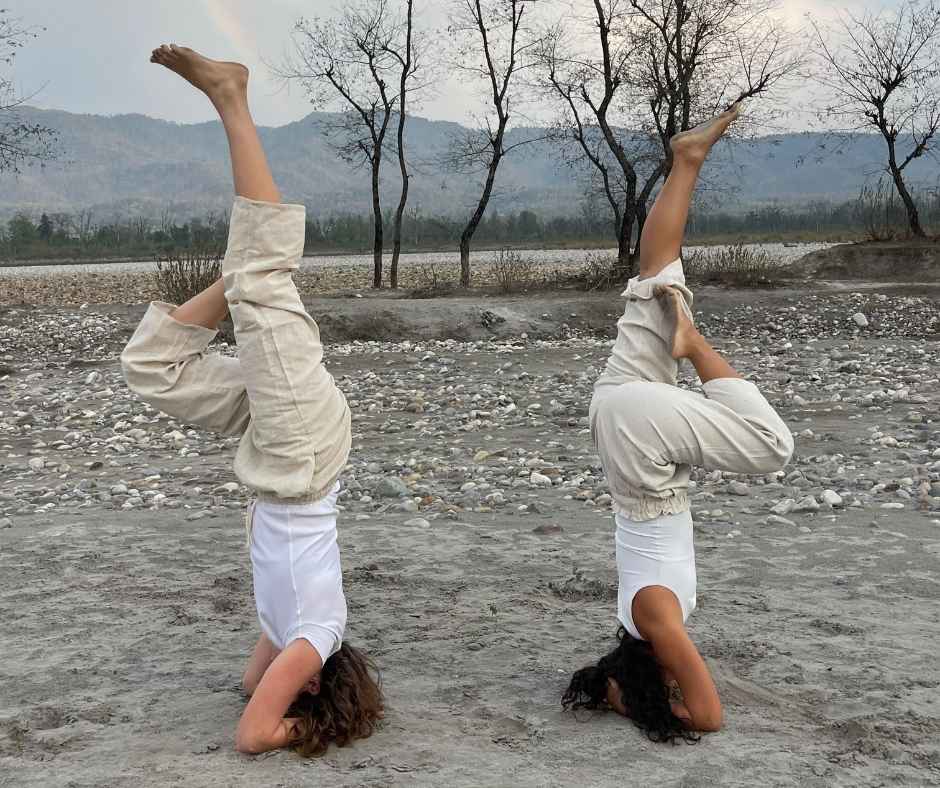
Are you looking for the correct translation and step-by-step instructions for headstand — or Shirshasana? You’ve come to the right place. This powerful and visually impressive yoga posture may look fancy, but it’s not about showing off — it’s about precision, alignment, and technique.
In this guide, you’ll learn everything you need to know about Shirshasana, also known as the headstand. From its Sanskrit origin and symbolism to physical and spiritual benefits, contraindications, and clear step-by-step guidance — this post is your ultimate resource to begin or refine your headstand journey safely and mindfully.
What Does Shirshasana Mean?
The word “Shirshasana” (शीर्षासन) comes from Sanskrit:
“Shirsha” = head
“Asana” = posture or seat
So, quite literally, Shirshasana means “head posture” — or more commonly, headstand.
It’s often referred to as the King of Asanas because of its wide-ranging effects on body, mind, and energy. From improving circulation to calming your nervous system, Shirshasana is a pose that offers more than just an Instagram-worthy photo — it’s a deep dive into balance, control, and conscious inversion.
Why Shirshasana is More Than a Fancy Pose
Sure, Shirshasana looks impressive. But it’s not about gymnastic skill or ego. True headstand practice is rooted in awareness and intelligent technique.
When you flip yourself upside down, you challenge your sense of gravity, stability, and control. That requires presence. It forces you to pay attention — to your core, your breath, your alignment, and your inner state. That’s the beauty of it.
Step-by-Step Instructions: Focus on the Foundation
Before kicking up into a headstand, you must build a strong base. That means focusing on the arms, shoulders, and core — and understanding how to distribute your weight away from your head.
1. Interlace Your Fingers and Set Your Base
Kneel on the mat and interlace your fingers. Place your forearms down, elbows shoulder-width apart. Your hands should form a cup shape, creating a triangle with your arms.
Let your thumbs gently touch the back of your head — not to push, but to stabilize. This setup gives you a safety mechanism:
→ If you tip backward, you can softly press your thumbs into the skull and redirect your fall forward (towards your abdomen), which is far safer than collapsing onto your spine.
2. Place the Crown of Your Head in the Hands
Gently rest the crown of your head in the cupped space. Make sure your neck is long and relaxed. Your weight should not rest heavily on your skull — most of it is supported by your forearms and the triangle base.
Adjust your elbows so they draw an even triangle shape on the ground. This geometric balance ensures equal pressure and stability.
3. Lift the Knees and Walk the Feet In
Now, tuck your toes and lift your knees off the ground. Walk your feet toward your body, gradually stacking the hips over the shoulders. This position is like Dolphin Pose and helps engage your core and stabilize the lift.
4. One Leg Up at a Time – Use the Wall
Lift one foot off the ground and then the other — slowly. Bend your knees if needed. It’s absolutely okay to use a wall for support. It helps prevent fear of falling and gives feedback on alignment.
5. Breathe and Stay
Hold the pose for 5 to 10 deep breaths, or longer if you feel comfortable and safe.
To come down, reverse the steps — slowly, with full control.
Benefits of Shirshasana
Physical Benefits
- Increases blood flow to the brain
- Strengthens shoulders, arms, and upper back
- Stimulates the lymphatic system
- Improves digestion and elimination
- Encourages proper posture and spinal alignment
Mental Benefits
- Improves concentration and mental clarity
- Reduces anxiety and mild depression
- Enhances body awareness and focus
- Regulates nervous system activity
Spiritual Benefits: The Crown Chakra
Shirshasana is directly connected to the Sahasrara (crown) chakra — the seventh energy center located at the top of the head. In yogic philosophy, this chakra is associated with spiritual connection, universal consciousness, and inner wisdom.
By inverting and bringing awareness to the crown, you symbolically open yourself to higher realms of clarity, intuition, and transcendence.
Contraindications: Practice With Awareness
While Shirshasana offers amazing benefits, it also requires caution. You should avoid practicing headstand if you have:
- High blood pressure
- Glaucoma or eye conditions
- Vertigo or frequent dizziness
- Recent neck, head, or spinal injury
- Heart conditions
- Pregnancy, especially during the first trimester
If you’re unsure whether Shirshasana is suitable for you, consult your doctor and a qualified yoga teacher first. The goal is safety, not pushing limits.
The Importance of Practicing With a Qualified Instructor
- Correct your alignment
- Help you modify based on your body
- Spot you when needed
- Guide your breath and focus
- Support your progress safely
Yoga is a journey. Having a teacher walk that path with you makes all the difference.
Want to Deepen Your Practice? Train With Experts
If you’re feeling inspired and want to learn more — whether to improve your personal practice or become a certified yoga instructor — we invite you to explore training with us at Yoga on Your Foundation.
We offer internationally recognized in-person Yoga Teacher Training in Rishikesh, India, the world’s yoga capital, and also fully accessible online yoga teacher trainings.
You can choose from:
- 200 Hour Yoga Teacher Training
- 300 Hour Yoga Teacher Training
- 500 Hour Yoga Teacher Training
- Fertility Yoga Teacher Training
Whether you want to study in the spiritual energy of Rishikesh or in the comfort of your home, we’re here to guide you. Our programs focus on traditional yoga, therapeutic alignment, and real-world teaching skills.
Can’t Travel Right Now? Try Our Online Yoga Teacher Training
We understand that not everyone can travel to India right now. That’s why Yoga on Your Foundation offers a flexible and immersive Online Yoga Teacher Training option — allowing you to complete your training remotely, at your own pace, while still receiving live support and feedback.
Our online yoga training includes full video modules, live Zoom sessions, community interaction, and personalized mentorship — all designed to bring authentic yoga directly to your space.
Whether you’re exploring Shirshasana as a student or aiming to become a teacher yourself, remember: it’s not about being upside down — it’s about finding balance, breath, and inner steadiness.
